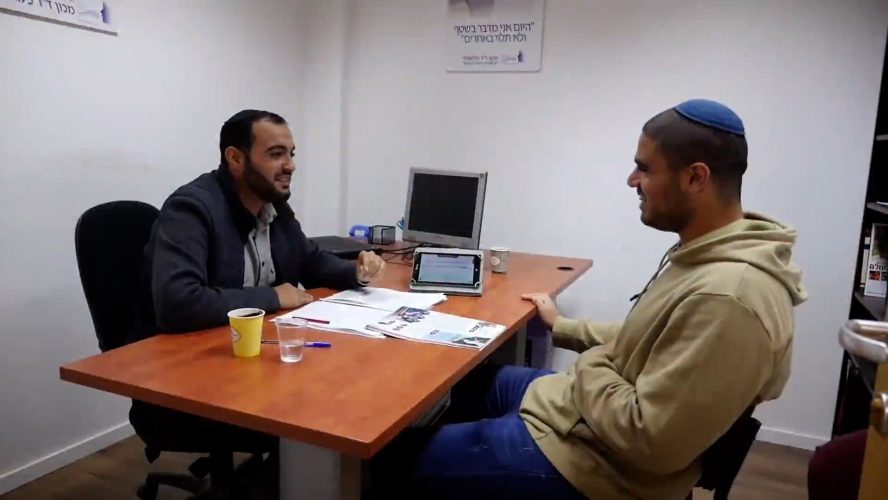Stuttering is complex—shaped by neurophysiology, language processing, emotion, and the social environment. For decades, therapy relied primarily on human expertise: skilled clinicians, careful assessment, and practice techniques delivered face-to-face. That core hasn’t changed. What has changed—dramatically—is everything around it. Today’s most effective Stuttering Treatment integrates technology at every step, from assessment and home practice to relapse prevention and real-world communication coaching.
For people seeking New York City Stuttering Treatment or NYC Stuttering Therapy, technology widens access, deepens insight, accelerates practice, and supports long-term progress. In this guide, we’ll unpack exactly how. We’ll also show how Dr. Fluency USA blends human clinical judgment with modern tools to create precise, personalized care plans.
Why Technology Matters in Stuttering Care
Before diving into individual tools, it’s helpful to frame the “why.”
-
Measurement & Insight: Apps, acoustic analysis, and AI turn subjective impressions into clear feedback loops. Data illuminates patterns, triggers, and progress you can actually see.
-
Intensity & Consistency: Micro-practice between sessions is easier with guided apps, homework reminders, and short “drills on demand.” Consistency—not perfection—drives change.
-
Real-World Transfer: VR, augmented reality, wearable biofeedback, and just-in-time smartphone prompts help bridge the gap between the clinic room and high-stakes conversations.
-
Motivation & Retention: Immediate feedback, streaks, and self-tracking dashboards make the long arc of therapy feel tangible and rewarding.
Technology does not replace the clinician; it multiplies the clinician’s reach. When used well, it turns therapy from a weekly event into a daily, life-woven practice.
Digital Assessment: From First Impressions to Actionable Baselines
A thoughtful evaluation remains the foundation of Stuttering Treatment. Technology enriches it in several ways:
1) Structured Intake & History Tools
Online intake forms gather speech history, variability patterns, avoidance behaviors, and impact domains (school, work, relationships). Standardized self-report measures can be completed remotely, improving accuracy and reducing appointment time spent on paperwork.
2) High-Fidelity Speech Sampling
Clinicians can record spontaneous speech, reading tasks, and phone-style audio snippets. High-quality recordings allow frame-by-frame review and acoustic analysis of syllable repetitions, prolongations, and blocks. When appropriate, your clinician can compare baseline samples to later sessions, offering a transparent picture of change.
3) AI-Assisted Observations (Used Judiciously)
Machine learning can flag disfluency clusters and estimate frequency or duration. At Dr. Fluency USA, clinicians never outsource diagnosis to AI; rather, AI-assisted flags act like a “second set of eyes.” The human expert leads; the algorithm supports.
4) Multi-Domain Screening
Since stuttering interacts with anxiety, attention, and language formulation, integrated questionnaires and short attention/working-memory tasks can help identify co-occurring needs. That enables smarter referrals and a more comprehensive therapy plan.
Biofeedback: Making the Invisible Visible
Many speech strategies hinge on precise control of breath, voice, and articulation. Biofeedback tools translate subtle physiological patterns into something you can see or hear.
Respiratory & Phonation Feedback
-
Breath pacing tools visualize inhalation and exhalation timing, helping clients coordinate breath with onset of phonation.
-
Pitch and intensity trackers show whether voicing starts gently and stays steady, reinforcing easy onsets and reduced tension.
Articulatory and Rate Feedback
-
Syllable-timed metronomes or rhythmic cues can temporarily support stabilized rate.
-
Real-time spectrograms or vowel space visuals (for advanced users) offer immediate evidence of over-tight vs. easy articulation.
Why It Helps
Without feedback, a strategy can feel right but be objectively tense or irregular. With feedback, you build accurate internal targets faster. As skill grows, visual aids are faded so speech becomes self-monitored in real-world contexts.
Altered Auditory Feedback (AAF): DAF, FAF, and Beyond
Altered auditory feedback systems, such as Delayed Auditory Feedback (DAF) and Frequency-Shifted Auditory Feedback (FAF), change how you hear your own voice. For some speakers, AAF can immediately reduce disfluency or tension by nudging rate, timing, or prosodic patterns.
Practical Considerations
-
Not a cure, a tool. AAF can be a bridge while you build durable strategies.
-
Individual variability. Some clients benefit; others find minimal effect or distraction.
-
Integration matters. The best outcomes occur when AAF is integrated with counseling, desensitization, and technique training.
Clinicians at Dr. Fluency USA trial AAF judiciously, monitor impact with and without the device, and emphasize transferable skills rather than long-term gadget dependence.
AI and Acoustic Analysis: Precision Feedback Without Guesswork
Modern speech analytics can measure timing, pauses, rate, and disfluency-like events over large samples. This matters because progress can be jagged and context-dependent. With better measurement, you get better coaching.
Where AI Helps
-
Pattern detection: Are disfluencies clustering at sentence starts, proper nouns, or under time pressure?
-
Rate and pausing: Objective trend lines across weeks normalize the ups and downs.
-
High-stakes prep: An AI “rehearsal pass” for a job interview or slide deck can highlight sections to practice more intensively.
Guardrails We Keep
-
Human-first interpretation. Numbers serve the client; they don’t label the person.
-
Privacy and ethics. Only HIPAA-compliant workflows and explicit consent.
-
Meaning over metrics. The aim is communicative freedom—not chasing a dashboard score.
Cognitive and Acceptance-Based Tools: Digitizing the Mindset Work
Speech strategies alone rarely address the shame, avoidance, and fear loops that reinforce stuttering’s impact. Digital tools make the mindset part of therapy easier to practice:
-
Guided CBT exercises for unhelpful predictions (“They’ll think I’m unprepared”)
-
Values and goals trackers to align communication with what matters (relationships, career, advocacy)
-
Mindfulness audio for non-judgmental awareness of stuttering moments
-
Journaling prompts to reframe “setbacks” as data and practice opportunities
At Dr. Fluency USA, clinicians weave these tools into speech work so clients build both technical skill and self-compassion—the combination that sustains long-term change.
Data-Driven Personalization: Your Plan, Not a Template
The best use of technology is personalization. A modern clinic should combine quantitative signals and qualitative insight to refine your plan.
Personalization Inputs
-
Acoustic patterns: Where do blocks and repetitions cluster?
-
Situational triggers: Which contexts flip the “pressure” switch?
-
Strategy response: Which techniques reduce struggle most reliably?
-
Psychological factors: What thoughts, emotions, or beliefs show up at key moments?
-
Life goals: What communication targets (promotions, presentations, social goals) define success for you?
Personalization Outputs
-
A prioritized strategy list for the next 2–4 weeks
-
Scenario-specific practice (e.g., “Thursday stand-up, 90-second update”)
-
Clear metrics: frequency or severity targets, self-ratings of control and confidence, and qualitative wins
-
A relapse-prevention plan with triggers, early-warning signs, and specific resets
Technology isn’t just “cool.” It’s a way to learn faster about you—and to act on what works.
Children and Teens: Playful Tech, Serious Progress
For younger clients, technology can boost engagement without overshadowing fundamentals.
-
Game-like drills reinforce turn-taking, rate control, and phrasing.
-
Parent dashboards align home support with clinician priorities.
-
School collaboration is easier when teachers can receive short video tips, communication goals, and progress notes securely.
Adults: Career-Aligned Coaching With Real Deliverables
Adult clients benefit from direct alignment with professional goals. Technology helps convert therapy into career assets:
-
Presentation polishing: Screen-share slide reviews with timing checkpoints, pacing cues, and practice recordings.
-
Interview prep: Simulated questions with immediate feedback on clarity, succinctness, and the smart use of pause.
-
Client-facing calls: Strategy stacks for discovery calls, negotiations, or case presentations—often rehearsed in short telehealth sprints.
When therapy concentrates on outcomes that matter—raising a hand in a seminar, leading a weekly stand-up, or pitching investors—motivation stays high and progress compounds.
Monitoring Progress: What We Track (and Why)
Progress tracking should be empowering, not obsessive. Typical metrics include:
-
Self-ratings of control, effort, and communicative satisfaction (1–10 scales are fine)
-
Context tagging (solo practice vs. spontaneous conversation vs. high-stakes event)
-
Objective features like rate and pause density (as helpful, not mandatory)
-
Functional outcomes (sent the email, made the call, presented the slide)
-
Well-being indices (avoidance reduced, confidence up, values-based actions taken)
At Dr. Fluency USA, we review data collaboratively. If a metric isn’t helping decisions, we drop it. The goal is to see which levers produce the most change with the least strain.
Choosing a Provider for New York City Stuttering Treatment
If you’re comparing options for New York City Stuttering Treatment, consider these technology-related questions:
-
Do they offer secure teletherapy with reliable audio and screen-share?
-
Can they provide structured home practice via app or portal?
-
Do they use biofeedback and data judiciously—not as gimmicks, but to accelerate learning?
-
Can they simulate your real-world demands (presentations, interviews, phone calls)?
-
Is there a clear plan for transfer, maintenance, and relapse-prevention?
At Dr. Fluency USA, we answer “yes” to each—with one more: everything we do is personalized to your voice, your goals, and your life in New York City.
The Bottom Line
Technology is not a magic wand for stuttering; it’s a multiplier of skilled therapy. When thoughtfully integrated, it improves access, makes practice easier, reveals patterns, accelerates transfer, and supports long-term growth. For professionals, students, and families seeking NYC Stuttering Therapy, the combination of human expertise and modern tools offers a pragmatic, hopeful path forward.
Ready to experience a personalized, tech-enabled approach? Connect with Dr. Fluency USA to explore a plan tailored to your goals, schedule, and real-world communication needs in New York City.













